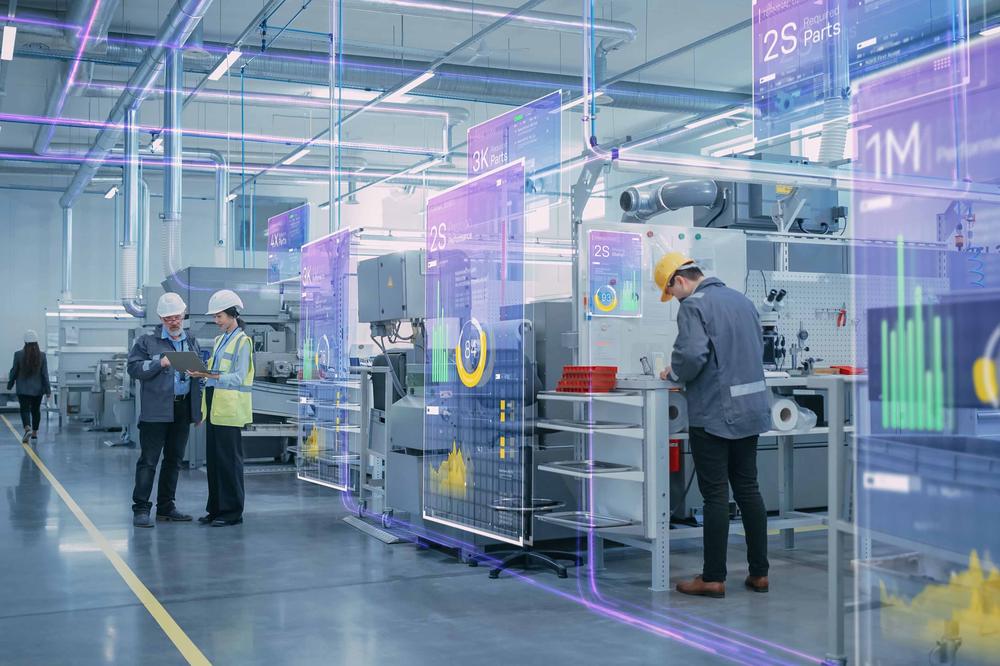
The B2B platform for the best purchasing descision. Identify and compare relevant B2B manufacturers, suppliers and retailers
Close
Filter
Result configuration
Continents
Select continent
Locations
Result types
Company type
Select company type
Industries
Select industry
Company status
Select company status preset
Number of employees
Min.
Max.
Founding year
The Crosstab Kite
Austin, United States
B
1-10 Employees
2021
Key takeaway
Crosstab Data Science specializes in building machine learning capabilities, including unsupervised learning, to deliver real-world impact. Their expertise extends to various areas, ensuring a comprehensive approach to data science.
Reference
Core business
Crosstab Data Science
Helm.ai
Menlo Park, United States
B
11-50 Employees
2016
Key takeaway
Helm.ai is pioneering a breakthrough in unsupervised learning for AI and autonomous technologies, which has significant implications for computer vision and various industries.
Reference
Core business
Home - Helm.ai

Prophysics - Artificial Intelligence Machine Learning en Big Data voor de bouwsector
Oudenbosch, Netherlands
A
1-10 Employees
2021
Key takeaway
The company text discusses the relationship between Machine Learning (ML) and Deep Learning (DL), highlighting that Deep Learning is a subset of Machine Learning.
Reference
Core business
Machine Learning Archieven - Prophysics
Looking for more accurate results?
Find the right companies for free by entering your custom query!
25M+ companies
250M+ products
Free to use
AGICortex
Poland
B
1-10 Employees
2020
Key takeaway
The company emphasizes its expertise in machine learning, specifically highlighting unsupervised learning as one of the key types of learning they distinguish in their approach. They also mention the use of synthetic data to enhance the training process for various applications, including those in computer vision.
Reference
Product
Technology – AGICortex
S.O.D.A
Or Akiva, Israel
B
11-50 Employees
-
Key takeaway
The company specializes in AI technologies and machine learning, with a strong focus on deep learning, data mining, and anomaly detection. They are experienced in tackling complex engineering challenges, which may include applications relevant to unsupervised learning.
Reference
Core business
Soda Development – Software Outsourcing Development & Architecture
Advectas
Stockholm, Sweden
A
501-1000 Employees
2006
Key takeaway
Advectas is a leading supplier in Business Intelligence and Data Science, with expertise in data management and preparation. Their focus on tailored solutions and data-driven insights can support decision-makers in understanding and applying concepts like unsupervised learning.
Reference
Core business
Business Intelligence & Data Science for better decisions | Advectas
Advectas create BI- & Data Science solutions and systems that help decision-makers at all levels make better decisions based on data-driven insights.
Unsupervised
Boulder, United States
B
51-100 Employees
2017
Key takeaway
Unsupervised leverages unsupervised learning to automatically analyze data, generating insights and recommending actions that can enhance revenue and reduce costs. This platform connects to your data quickly, providing a comprehensive view of key performance indicators without the need for manual preparation.
Reference
Core business
See the Unsupervised automated data analytics platform
Unsupervised uses unsupervised learning to automatically analyze your data to show why your metrics are moving up or down. Unsupervised AI that shows you why.
SOLWAI
Paris, France
A
1-10 Employees
2019
Key takeaway
SOLWAI specializes in developing custom software solutions that incorporate advanced techniques such as artificial intelligence and machine learning. Their commitment to innovative approaches suggests a strong foundation in leveraging data for intelligent solutions, which is central to the concept of unsupervised learning.
Reference
Service
Machine learning Archives - SOLWAI
Knowledgenest
London, United Kingdom
A
11-50 Employees
-
Key takeaway
The company, KNOWLEDGE NEST, is dedicated to developing innovative educational programs and providing personalized tutoring that helps students build self-confidence and achieve their academic goals. With a commitment to flexible and affordable tutoring services, they ensure that students of all ages have access to expert guidance in various subjects.
Reference
Product
Artificial Intelligence and Data Science
iMORPHr
Southampton, United Kingdom
A
1-10 Employees
2019
Key takeaway
iMORPHr specializes in providing advanced machine learning services and solutions, aimed at tackling complex business challenges. Their expertise in modern technologies positions them to deliver innovative and result-oriented machine learning applications.
Reference
Service
Machine Learning Services and Solutions - iMORPHr
iMORPHr offers next-gen machine learning services and solutions to address complex business challenges.
Technologies which have been searched by others and may be interesting for you:
Unsupervised learning is a type of machine learning that deals with unlabeled data. In this approach, algorithms analyze input data without prior training on specific outputs or categories. The primary goal is to identify patterns, groupings, or structures within the data. This method is particularly effective for clustering similar items, reducing dimensionality, and discovering hidden features. By leveraging techniques such as k-means clustering and hierarchical clustering, unsupervised learning can uncover insights that may not be immediately apparent, making it a valuable tool in various applications, including market segmentation and anomaly detection.
Unsupervised Learning and Supervised Learning are two fundamental approaches in machine learning, each with distinct methodologies. In Unsupervised Learning, algorithms analyze data without labeled outputs, aiming to identify patterns, groupings, or structures within the dataset. This type of learning is beneficial for tasks like clustering and dimensionality reduction, where the goal is to explore the data's inherent characteristics. Conversely, Supervised Learning relies on labeled data, where the model is trained on input-output pairs. The objective here is to predict outcomes based on new input data. This approach is widely used for classification and regression tasks, where clear relationships between input features and output labels are established. Understanding these differences is crucial for selecting the appropriate learning method for specific applications.
1. K-Means Clustering
K-Means Clustering is a widely used algorithm that partitions data into K distinct clusters based on feature similarity. It iteratively assigns data points to the nearest cluster center and updates the cluster centers until convergence.
2. Hierarchical Clustering
Hierarchical Clustering creates a tree-like structure of clusters, allowing for the grouping of data at various levels of granularity. It can be agglomerative (bottom-up) or divisive (top-down), making it versatile for different datasets.
3. Principal Component Analysis (PCA)
PCA is a dimensionality reduction technique that transforms data into a lower-dimensional space while preserving variance. It helps in visualizing data and reducing noise, making it essential for exploratory data analysis.
4. t-Distributed Stochastic Neighbor Embedding (t-SNE)
t-SNE is particularly effective for visualizing high-dimensional datasets. It reduces dimensions while preserving local structures, allowing for clearer representation of clusters in graphical form.
5. Autoencoders
Autoencoders are neural networks designed to learn efficient representations of data through unsupervised learning. They consist of an encoder that compresses the input and a decoder that reconstructs it, useful for tasks like anomaly detection.
1. Retail
Unsupervised learning is widely used in the retail industry for customer segmentation. By analyzing purchasing behaviors and preferences, retailers can create targeted marketing strategies and optimize inventory management.
2. Healthcare
In healthcare, unsupervised learning aids in identifying patterns in patient data, which can lead to improved diagnosis and treatment plans. It helps in clustering similar patient profiles for personalized care.
3. Finance
Financial institutions utilize unsupervised learning for anomaly detection. This application helps in identifying fraudulent transactions by recognizing patterns that deviate from the norm.
4. Manufacturing
In manufacturing, unsupervised learning is employed for predictive maintenance. By analyzing machinery data, companies can predict failures and schedule maintenance proactively, reducing downtime.
5. Marketing
Marketers use unsupervised learning to analyze consumer sentiment from social media and online reviews. This insight allows for better product development and marketing strategies tailored to consumer preferences.
Unsupervised learning employs various algorithms to identify patterns and group similar data points without prior labeling. It analyzes the structure of the data, allowing the model to detect inherent groupings or clusters based solely on the features and relationships among the data points. K-means clustering This popular algorithm partitions data into distinct clusters by minimizing the variance within each cluster. It iteratively assigns data points to clusters based on their proximity to the centroids. Hierarchical clustering This method builds a tree-like structure to represent data clusters. It starts with each data point as an individual cluster and merges them based on similarity, allowing for a comprehensive view of relationships among data points. Both approaches enable unsupervised learning to effectively manage data clustering, providing valuable insights without labeled training data.
Some interesting numbers and facts about your company results for Unsupervised Learning
| Country with most fitting companies | United States |
| Amount of fitting manufacturers | 15 |
| Amount of suitable service providers | 13 |
| Average amount of employees | 11-50 |
| Oldest suiting company | 2006 |
| Youngest suiting company | 2021 |
20%
40%
60%
80%
Some interesting questions that has been asked about the results you have just received for Unsupervised Learning
What are related technologies to Unsupervised Learning?
Based on our calculations related technologies to Unsupervised Learning are Big Data, E-Health, Retail Tech, Artificial Intelligence & Machine Learning, E-Commerce
Who are Start-Ups in the field of Unsupervised Learning?
Start-Ups who are working in Unsupervised Learning are The Crosstab Kite, Prophysics - Artificial Intelligence Machine Learning en Big Data voor de bouwsector
Which industries are mostly working on Unsupervised Learning?
The most represented industries which are working in Unsupervised Learning are IT, Software and Services, Education, Other, Defense, Electronics and Electrical engineering
How does ensun find these Unsupervised Learning Companies?
ensun uses an advanced search and ranking system capable of sifting through millions of companies and hundreds of millions of products and services to identify suitable matches. This is achieved by leveraging cutting-edge technologies, including Artificial Intelligence.